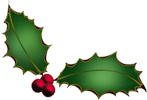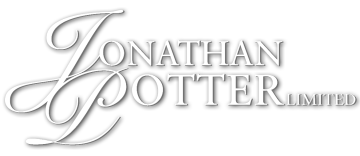Biographies of Some of the More Famous Cartographers
Franz Johann Joseph Von REILLY
Austrian born Franz Johann Joseph von Reilly (1766-1820) produced over 830 maps for his great atlas project, "Schauplatz der funf Theile der Welt" between the years 1789 and 1806. Of these 830 maps published over this time span of seventeen years, he ‘showcased’ but one part of the world, Europe. Maps of the other four continents remained unpublished. The maps of the "Schauplatz ..."were drawn to a uniform criteria.
Reilly’s "Grosser deutscher Atlas" was also notable as the first completely ‘Austrian’ atlas. This large world atlas, containing relatively few maps, was issued between 1794 and the end of 1796. Reilly may have used Franz Anton Schraembl’s work as his model, at least in part.
Reilly’s work, along with that of Schraembl, contributed to the increase of commercial cartography in Austria.
Jacques ROBBE
Jacques Robbe (1643-1721) was known as a geographer for the volume, “Methode Pour Appredres Facilement La Geographie”. He was born in Soissons, was educated as a lawyer and was as well-known as a poet and playwrigt as he was a geographer. His “Methode ...” was first published in 1678 and was intended as an educational volume. The contents were divided into a treatise on the sphere and the division of the world into its various continents, kingdoms and empires. However, this first 1678 volume lacked maps but was rectified in the second edition of 1685
The Family ROBERT DE VAUGONDY
The Robert de Vaugondy family responsible for map and globe publishing in Paris comprised Gilles Robert de Vaugondy (1688-1766) and Didier Robert de Vaugondy (1723-1786). The father (Gilles) and son (Didier) business flourished from 1731 to 1778.
The eighteenth century was an important period for the history of French cartography, as French map-makers established themselves as the leaders of the European school of cartography. Important milestones established by French map-makers were the re-mapping of France by triangulation, and the accurate determination of longitude throughout the world.
Prominent at this time among French map-makers were the Robert de Vaugondy family, who made a substantial contribution to the eighteenth century world of cartography, through the breadth and success of their prolific output, which included atlases, maps, globes and book illustration.
The major contribution made by French map-makers was to emphasise utility in their maps, rather than the elaborately decorative, imaginative and interpretative approach adopted by the Dutch.
While only a small part of their output, the “Atlas Universel” encapsulates the diligent and scientific approach adopted by the Roberts de Vaugondy, and proved to be the most successful French world atlas of the period. It appeared from c.1757 onwards.
Jean ROCQUE
John [Jean] Rocque (c.1704-1762) was a Huguenot emigré surveyor who worked in London from about 1734. His early work was concentrated on large scale plans of the estates and gardens of the Crown and aristocracy, for example his plans of Kensington Gardens and of Kew Gardens. As his reputation grew, his projects became more ambitious; he embarked on large-scale surveys of English towns and individual counties. Perhaps his best known works are his survey of the Cities of London and Westminster, at a scale of nearly twenty five inches to the mile and printed on 24 sheets, in which individual buildings were identified, and his map of the environs of London, on a scale of about five and a half inches to the mile and printed on 16 sheets.
The survey work took Rocque four years, commenced in 1741 and completed in 1745. The engraving was carried out by Richard Parr between 1744 and 1746, and is notable for the clarity with which the information is presented.
These two surveys are the definitive delineations of London and its environs from the middle part of the eighteenth century, and proved particularly influential among Rocque’s contemporaries - it was not until John Horwood’s survey was completed in 1799 that Rocque’s work was superseded.
Rocque’s survey of the environs of London is particularly interesting as showing the relatively small extent of London, with many familiar places in Greater London now depicted as outlying villages.
Rocque also prepared large numbers of maps of the countries and parts of the world, often issued separately, which accounts for their scarcity.
In 1746 also he produced a set of pocket-sized county maps for “The English Traveller”.
Giovanni Giacomo de ROSSI
Giovanni Giacomo de Rossi (1627-1691) was a printer and publisher in Rome, active in the 1680s and 1690s. One of his major atlas publications was the “Mercurio Geografico”, published in about 1690.
Lieutenant George-Louis Le ROUGE
Lieutenant George-Louis Le Rouge (c.1712-c.1790) was born in Hanover, Germany. He became a Lieutenant in the regiment of Saxe before establishing himself as a publisher, compiler and editor of maps in Paris. He later became the “Ingenieur Geographe de Roi”.
Le Rouge is particularly known for such atlas works as the “Atlas Nouveau” of 1746 and the “Atlas Nouveau Portatif ...” or the “Introduction A La Geographie” of 1756 – French publications of some merit.
Le Rouge was initially a military “Ingenieur” for fortifications and he was also a map-maker for the army and Marine Royale. He was active between 1740 and 1780, in Paris at, rue des Augustins.
John RAPKIN
John Rapkin drew and engraved the maps for John Tallis’ renowned “Illustrated Atlas” published to coincide with the great exhibition in London in 1851. The maps were also later re-issued by the London Printing and Publishing Company, still bearing the Tallis imprint. Rapkin’s style is elegant and clear – considerable geographical detail and nomenclature is shown on the maps.
Gabriel Nikolaus RASPE
Little is known of Gabriel Nikolaus Raspe (1712-1782), an eighteenth century publisher and bookseller working in Nuremberg. Amongst other works, he was responsible for such publications as “Schauplatz Der Gegenswaertigen Kriege“ 1757-64 and “Geschichte Der Kriege“ 1776.
John ROPER
John Roper (1771-c.1810) was a English engraver known to have worked from several locations in London. He engraved the maps, drawn by G.Cole, to accompany Edward W. Brayley and John Britton’s partwork entitled “Beauties of England Wales”. This work was published in 18 volumes between c.1804 and 1810, which was published as “The British Atlas” in 1810 by Verner, Hood and Sharpe. Roper’s maps were also re-issued to illustrate the Reverend J Nightingale’s “English Topography” of 1816 (and other later editions), published by Baldwin, Craddock and Joy – another publishing partnership of the nineteenth century.
Johann Matthias Christoph REINECKE
Johann Matthias Christoph Reinecke (1770-1818) was a well-known cartographer working from Halberstadt and Coburg during his career. He is known to have contributed 16 maps to the Weimar atlas, including Africa and northern Europe. He also worked as author, cartographer, geologist and lithographer for F.J. Bertuch on a number of other volumes.
Further information about many of these cartographers may be found in the volumes of Tooley's Dictionary - an invaluable addition to any map collection or single item.



